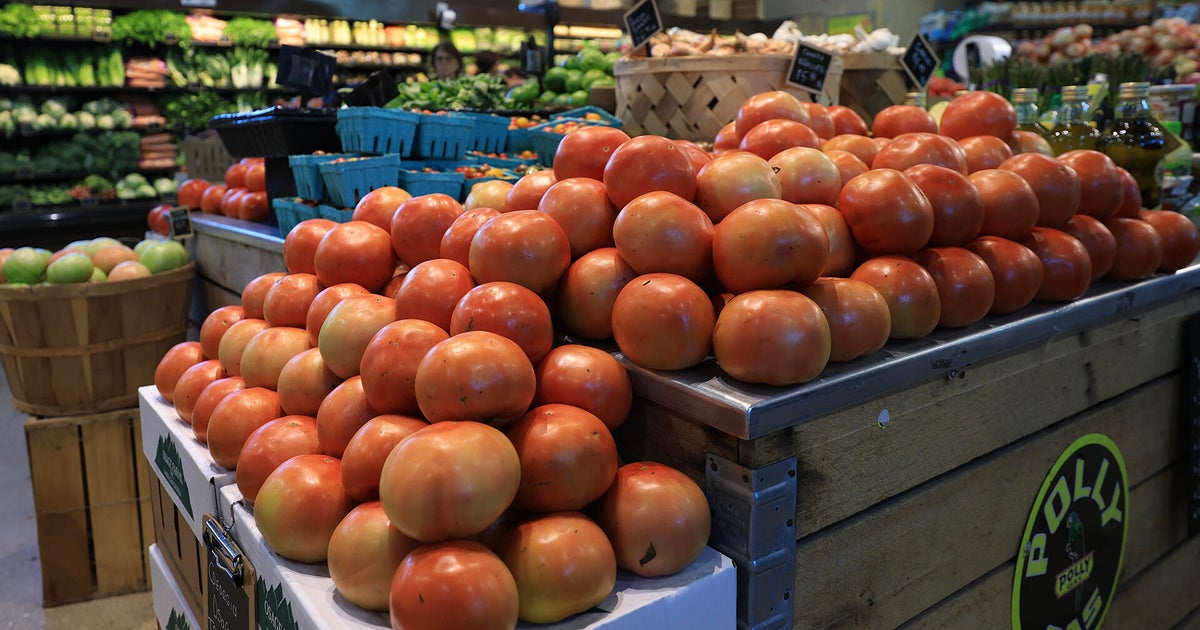The U.S. economy has a case of food-flation. Wholesale prices for fresh veggies soared by a record amount last month while grocery costs were up 2.2% compared to last year. Lisa Rozner reports on how consumers are dealing with rising costs.
Why it matters
- Rising wholesale prices for fresh vegetables indicate growing inflationary pressures on food costs.
- Consumers are feeling the impact of these increased grocery prices, affecting their purchasing decisions.
- The current trend highlights broader economic concerns, including supply chain issues and climate impacts on agricultural production.
In recent developments, the U.S. economy is grappling with a phenomenon being termed “food-flation,” as wholesale prices for fresh vegetables have reached unprecedented heights. This escalation in costs is a significant concern for consumers, who are already facing a 2.2% increase in grocery prices compared to the same period last year. Lisa Rozner, a journalist covering economic trends and consumer impacts, reports on how these rising expenses are influencing the daily lives of Americans.
The sharp increase in wholesale vegetable prices has raised alarms among economists and consumers alike. Factors contributing to this surge include disruptions in supply chains, adverse weather conditions affecting crop yields, and heightened transportation costs. As farmers face challenges in production, the ripple effects are being felt at the grocery store checkout, where consumers are now paying more for their staple foods.
The impact of these rising prices is tangible; many families are adjusting their shopping habits to adapt to the new economic landscape. Consumers are increasingly opting for budget-friendly alternatives or reducing their overall grocery purchases. Some are turning to local markets or farm stands to seek better deals on fresh produce, while others are relying more heavily on frozen or canned goods, which may offer more price stability.
Grocery store owners and managers are also feeling the pressure of these changes. Many are concerned about how to balance maintaining quality and affordability for their customers. Some stores are implementing promotions or loyalty programs to help mitigate the effects of rising prices, but the overall trend remains concerning. The question of how long these inflationary pressures will persist hangs heavily over the industry.
The situation is further compounded by broader economic conditions, including inflation rates that have been affecting various sectors. While the Federal Reserve has taken steps to manage inflation, the food sector remains particularly sensitive to fluctuations in supply and demand. The confluence of climate change, geopolitical tensions, and economic policies has created a perfect storm for food prices.
In addition to the immediate effects on consumers, rising food prices have long-term implications for public health and nutrition. Higher costs can lead to poorer dietary choices, as families may prioritize less expensive, processed foods over healthier fresh options. This trend raises concerns among health officials who warn about the potential for increased rates of obesity and related health issues as a result of shifting eating habits.
As the situation evolves, analysts are keeping a close watch on market trends and consumer behavior. Many are optimistic that the food supply chain will stabilize in the coming months, but others caution that climate factors and ongoing supply chain disruptions could prolong these inflationary pressures.
Retailers and consumers alike are bracing for continued volatility in food prices, and many are urging policymakers to address the root causes of these economic challenges. The rising costs of groceries is not just a temporary hurdle; it reflects deeper systemic issues within the agricultural and food distribution systems in the U.S. As stakeholders from farmers to consumers navigate this complex landscape, the hope is that solutions can be found to mitigate the impact of food-flation on everyday Americans.
In summary, the current rise in food prices is a multifaceted issue that affects not only individual consumers but also the broader economy. As wholesale vegetable prices soar and grocery costs rise, understanding the factors at play will be crucial for consumers and policymakers moving forward.











